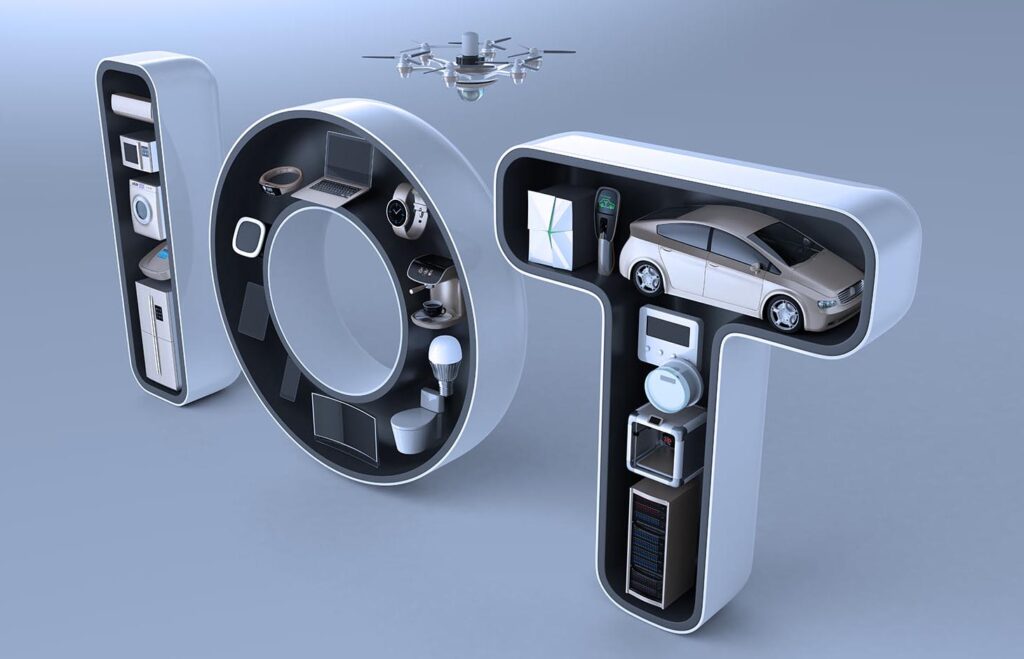Growing up in rural Kansas, Jason Tatage spent a lot of time on his grandfather’s farm. He was drawn to the agriculture process, but his grandfather warned him off, saying that farmers were always on the losing end.
Undaunted, Tatage started his career trading commodities like grain, and later developed a mobile marketplace to do so. Watching technology transform and capitalize on various data pieces, he was convinced that there was a way to capture useful data on farms.
In 2013, Farmobile was established. The business utilizes Internet of Things (IoT) advances to develop Passive Uplink Connection (PUC) devices that connect to farm machinery and capture critical data. It then uploads the information to their secure cloud.
“Every day, farmers make choices and decisions on the farm that comprise a proprietary recipe,” he said in an interview with Successful Farming. “There’s value not only in what they produce but also in the information they collect on how they produced it.”
That isn’t the only notable story about Farmobile. The business not only generates recurring revenue through their PUC devices, but also gives users the opportunity to create their own income. Twice a year, farmers have the option to license and sell their data.
Helping generate revenue for his customers was important for Tatage. “Everybody takes from a farmer. Nobody gives,” he summed up. “That has got to change.”
IoT is changing the face of business
Two decades ago the co-founder of MIT’s Auto-ID Center, Kevin Ashton, coined the term “Internet of Things,” or IoT. With devices to monitor data, the IoT essentially gives voice to inanimate objects, capturing vital data and measuring it for future use.
Ever since Ashton determined that lipstick inventory on a shelf could be monitored through RFIDs, or radio-enabled chips, the business potential for IoT-based applications has expanded. In fact, Gartner released a study predicting that there will be 21 billion IoT devices connected by 2020.
Essentially any industry that can benefit from monitoring data can capitalize on IoT technology, from manufacturing to law enforcement. Even the hospitality industry has tapped into it, improving guest experiences with ‘smart rooms’ and streamlining the way hotel conferences are set up with audio/visual equipment.
Other industries have benefited from the advantages of IoT technology by monetizing the data they capture and monitor. E-commerce and subscription-based businesses are continually looking at ways to incorporate IoT data.
It’s been established that a business with a product that is consumable and measurable on a repeating basis is a good candidate for recurring billing practices. In the booming software as a service (SaaS) industry, this is particularly true.
With IoT advancements, a business can bill for something that is non-consumable: data.
The democratization of IoT
In this digital era, devices are smaller than ever. Consider the ENIAC, or Electronic Numerical Integrator and Calculator. Built over several years in the 1940s, the computer took up about 1,800 square feet and weighed almost 50 tons. Now take a look at your smartphone. In 70 years, man has taken a computer that would fit comfortably in a 3-bedroom apartment and shrunk it down to fit in your back pocket.
Consequently, sensors and other data-measuring technologies are not only growing smaller, but reductions in costs and enterprise IT assets means that devices are also becoming more affordable. Because of this, the IoT is not just for large enterprise companies anymore; it is within reach of smaller businesses as well.
Recurring billing with IoT
There are several ways a business in the IoT space can model its pricing structure, one of them being usage-based billing for IoT.
Prior to comprehensive recurring billing platforms, usage-based billing was a challenge to manage due to the fact that the data is dynamic. The only industries that employed this structure were those which absolutely needed to bill on measured usage. For example, a water company could not charge one flat fee to homeowners; it had to monitor how much water was used and invoice accordingly.
Other industries shied away from usage-based pricing because consumption was hard to track. Manual billing was time-consuming and subject to human error, which could result in costly refunds.
There is an increasing need to seamlessly capture, aggregate, and input large-scale, real-time information into recurring billing systems. This practice is commonly utilized when examining machine data called UDRs, or Usage Detail Records. The information is modified into a format that is then converted into other systems such as billing. As IoT and networked device data continue to penetrate industry practices, the demand for this conversion continues to grow.
Comprehensive recurring billing software automatically captures usage information and seamlessly invoices accordingly. With the increased availability of data monitoring through IoT deployment, billing for consumption on a monthly, quarterly, or annual basis is even more attainable for small and large businesses alike.
Telematics and usage-based billing
Telematics, or fleet tracking, involves asset monitoring of things like ships, cars, or heavy machinery. First developed in the ‘60s, the US Department of Defense used the system to track military movements and improve communication.
The telematics sector is often considered an extension of the IoT market. A telematics device will likely include a GPS, engine interface, and an accelerometer, along with other components.
With these components, a number of critical data points can be measured including speed, brake and seat belt usage, battery voltage, location, and trip distance. The data can then be measured and billed on a recurring basis monthly or annually.
As with IoT, managing and monetizing thousands of these components and assets comes with its own challenges, including:
- Providing easy-to-understand invoices when there are a number of assets often exceeding 100,000 assets per invoice
- The ability to track additional information like name, serial and version numbers, VIN, IM card number, carrier, MAC address, firmware version, location, geolocation, etc.
Successful monetization of this sector requires a sophisticated subscription management and recurring billing platform that can manage and track thousands of these IoT assets or devices.
A robust billing platform can produce clean invoices and provide asset details. In fact, IoT businesses can combine set fees, such as subscription charges and administrative costs, with the fluctuating units measured and billed. The asset details can also be synchronized with other systems to streamline the process.
Insurance companies are also tapping into telematics data by monitoring information to adjust premiums. Now even personal insurance carriers can do this for safe drivers. In fact, some carriers have reported as much as 14% in claims cost reductions by facilitating better accident detection and mitigating other driving risks.
SaaS businesses leverages IoT-fueled billing
Software companies can also monitor and bill on a usage basis, distinguishing heavy hitters from customers who don’t use their product often.
For example, a SaaS company that offers security solutions may charge each time a system is scanned for security breaches, or how many IoT assets are utilizing their product. Tenable notes that in 2017, more than 15,000 vulnerabilities were discovered, an average of 41 every day.
A SaaS company that monitors, detects, and eliminates these cyber-attacks across IoT devices could charge based on the number of times an asset was exposed to a potential breach, but remained protected.
Healthcare billing disrupted by the Internet of Things
The healthcare industry is finding many different ways to improve services and bill more effectively with help from the IoT.
For example, Mt. Sinai Medical Center in New York City uses a healthcare program called AutoBed to triage and match patients up with available beds in the hospital. AutoBed monitors 15 different variables, including patient requirements and nurse proximity. When the center instituted the IoT program several years ago, they reduced the wait time for ER patients by 50%.
Device deployments that use IoT technology can tap into the recurring billing arena as well. As health monitoring wearables become more affordable and available, they generate a multitude of data.
This data can be measured and billed accordingly. For instance, a healthcare company may provide a transcutaneous electrical nerve stimulation (TENS) unit to patients with arthritis or joint pain. The unit sends an electrical pulse to stimulate nerves in specific areas, thereby helping a patient manage pain.
A good device can cost hundreds of dollars; the up-front cost may be a barrier to some users, particularly seniors or disabled patients.
With increased connectivity, a TENS provider can now monitor the number of times electrical impulses are deployed and what degree of intensity is selected to mitigate pain. A business measuring and invoicing usage in a recurring billing model can distinguish user types and bill accordingly. A patient that uses the TENS unit for severe, ongoing pain would pay more than a patient who only uses one occasionally or for a short recovery period.
This usage-based billing method or other ways to manage pricing can be similarly applied to other healthcare devices, from cardiac monitors to insulin pumps.
Moving on from the hype IoT received in its early years, there are now standardized methods to drive growth and monetize IoT devices and assets. This has been underscored by case studies in various industries, including logistics, automotive, and security, as well as other generalized IoT deployments in B2B and B2C sectors.
Whether it’s making the most of the data generated in a field of corn or measuring how often an asset is exposed to GandCrab ransomware, the IoT is enabling businesses to tap into promising revenue streams. An agile billing platform that can handle thousands of IoT assets and allow for innovative pricing models across multiple industries is a business necessity for successful monetization.








